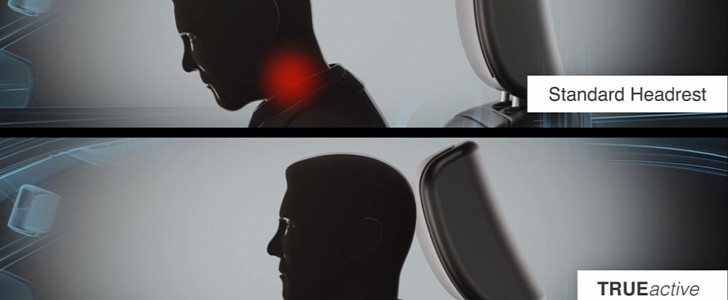Many modern vehicles come with mobile headrests that offer whiplash protection in the case of a rear-ending. Most, if not all, move into position to limit head movement after the vehicle strikes from behind. A Canadian supplier works on headrests that can “sense” the crash before it happens, thus offering superior protection.
When a rear-end accident happens, the occupants’ heads are pushed back violently and could even snap if there’s nothing to stop them. That’s why modern cars feature headrests, although their name understates their importance. The headrest best protects the neck if the head is close so that its movement is minimal. To improve their role, carmakers invented movable headrests. Usually, these use body motion to propel the head restraint closer to occupants’ heads in the case of a rear-end collision.
The result is improved, but this doesn’t change the fact that the headrest still reacts to the crash. The Canadian supplier Windsor Machine Group, a headrest specialist, improved the head cushion with an active deployment mechanism. Just like pre-crash systems in many modern vehicles, the True Active headrests can sense a rear crash before it happens and use their adjusting motors to move into position. This should offer improved protection in the case of a rear-ending.
Windsor Machine Group explains that their active headrest is not much different than regular electrically adjustable head restraints. The adjusting motors are linked to a rear bumper-mounted camera and radar, and the software decides when a crash is imminent. In that case, the motors inside push the headrest forward, closer to the occupants’ heads. This takes seven-tenths of a second, which could prove crucial in reducing and sometimes even eliminating whiplash injuries in some accidents.
“This is novel in that it activates prior to impact,” Marcy Edwards, a senior research engineer at the Insurance Institute for Highway Safety, told Automotive News. “So it’s an opportunity to get the occupants in a better position prior to impact and improve things earlier in a crash. We think it has potential, but we have to find out for sure.”
The new “True Active headrests” were tested by the IIHS on July 19 after the institute bought two Honda Pilots and fitted one of them with the new safety tech. Engineers are still examining the data gathered after both cars were crash-tested. The test results should come in September. The IIHS will most likely lobby carmakers to install these systems if the tests show they effectively reduce whiplash injuries.
The result is improved, but this doesn’t change the fact that the headrest still reacts to the crash. The Canadian supplier Windsor Machine Group, a headrest specialist, improved the head cushion with an active deployment mechanism. Just like pre-crash systems in many modern vehicles, the True Active headrests can sense a rear crash before it happens and use their adjusting motors to move into position. This should offer improved protection in the case of a rear-ending.
Windsor Machine Group explains that their active headrest is not much different than regular electrically adjustable head restraints. The adjusting motors are linked to a rear bumper-mounted camera and radar, and the software decides when a crash is imminent. In that case, the motors inside push the headrest forward, closer to the occupants’ heads. This takes seven-tenths of a second, which could prove crucial in reducing and sometimes even eliminating whiplash injuries in some accidents.
“This is novel in that it activates prior to impact,” Marcy Edwards, a senior research engineer at the Insurance Institute for Highway Safety, told Automotive News. “So it’s an opportunity to get the occupants in a better position prior to impact and improve things earlier in a crash. We think it has potential, but we have to find out for sure.”
The new “True Active headrests” were tested by the IIHS on July 19 after the institute bought two Honda Pilots and fitted one of them with the new safety tech. Engineers are still examining the data gathered after both cars were crash-tested. The test results should come in September. The IIHS will most likely lobby carmakers to install these systems if the tests show they effectively reduce whiplash injuries.






